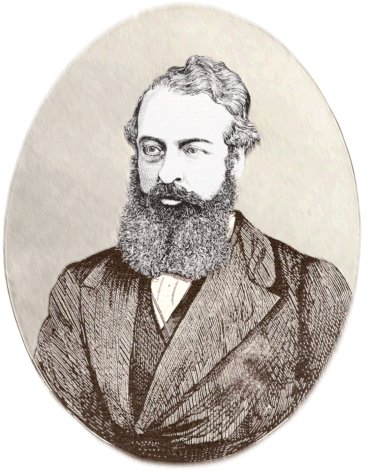
The Virginius Incident

Sidebars
- Captain Joseph Fry
- Report from Captain Castillo
- Report of Midshipman Don Angel Ortiz Monasterio
- Report from Commander Burriel on the Executions
- Report to U.S. Congress
Captain Joseph Fry

On July 20, 1873, Joseph Fry went to New York to meet General Manuel Quesada, who was serving as an agent of the Cuban rebels. Fry was offered command of the Virginius, the ship which constituted a sort of “Navy” for the Cuban rebels fighting for independence from Spain in what we now recall as The Ten-Year War.
Born in Tampa, Fry was part of the 2nd class to graduate from the Naval Academy, and entered the confederate Navy in February, 1861.
A New York Times article published November 24, 1873, revealed that Captain Fry held the rank of Lieutenant in the Confederate navy, serving on the Mississippi under the command of Commodore Hollins at New Orleans.
He later commanded a gunboat that was overcome in battle, recovering consciousness in a Federal hospital with a severe shoulder wound. After he was exchanged and reassigned to duty, but still suffering from his wound and semi-paralyzed, he “undertook the lighter duty of commanding a Confederate steamer; the Eugenie,” where he “proved himself a skillful, daring commander, and was uniformly successful.” (NYT)
“Personally, he was a tall, well-made, handsome man, with the most mesmeric eyes,” the article describes, “having great power of control, both over himself and others. His mind was remarkably good and well cultivated. He was a deep reader and thinker…” (NYT)
“As an old naval officer, having personal experience of the laws of blockade, he both knew the legal limits of his liability if captured and trusted the flag he bore for protection from all other penalties.” (NYT)
Captain Fry knew what he was getting into when he agreed to command the Virginius. From his bio: “…the nationality and ownership, character and occupation, of the Virginius were matters of newspaper notoriety when her command was offered to Captain Fry.” (Walker)
On October 4, 1873, Joseph Fry went to Kingston to assume command of the Virginius. He was executed by a Spanish firing squad on November 7, 1873.
After his execution, “both journals (the Picayune and the Republican) sprang to the defense of Captain Fry,” wrote Henry A. Kmen in The Journal of the Louisiana Historical Association, “when Northern papers resurrected old charges that he had caused his troops to fire needlessly upon the crew of a disabled federal vessel.” (Kmen)
A book about Captain Fry (Life of Captain Joseph Fry: the Cuban Martyr) was published in 1875.